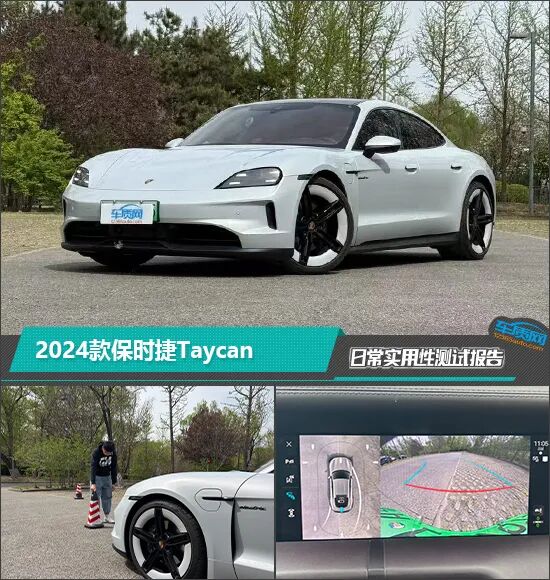
As the first model in Porsche’s electrification strategy, the Taycan has attracted significant attention since its launch. On this new track, it not only redefines the standards for “pure electric performance cars” but also successfully carries forward the performance king status from the fuel era into the electric age, making it a benchmark product of transition. For this reason, the Taycan has become a model that many brands aspire to emulate, and its capabilities are undeniable. So how does the new car perform in terms of daily practicality? This issue of the “Practicality Test Report” will explore this through multiple tests.

Test Vehicle: 2024 Porsche Taycan 4
Official Guideline Price: 1,038,000 RMB
01 丨Functional Configuration Test Section
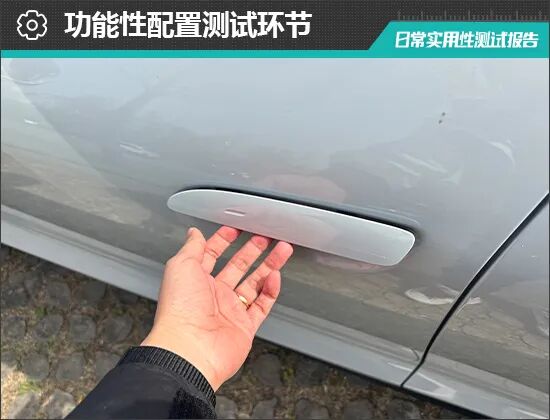
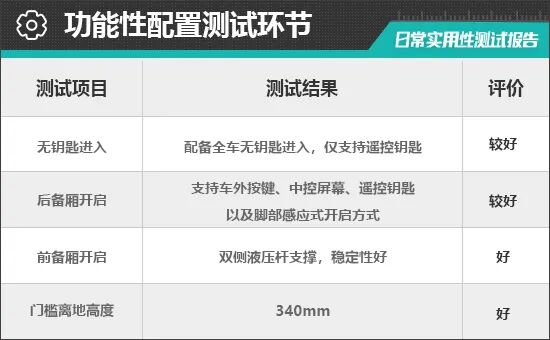
The test vehicle is equipped with a full keyless entry system, but it only supports remote keys, making its functionality somewhat limited. The driver must carry the smart key close to the vehicle and unlock or lock it by touching the recessed area on the door handle. The actual unlocking and locking process is very smooth, and the overall performance is satisfactory.

The trunk can be opened using the in-car screen, an external button, the remote key, or a foot-activated sensor, demonstrating good convenience for daily use.
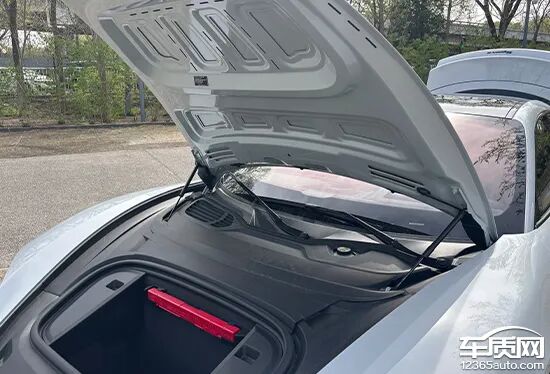
The switch for opening the front trunk is located within the central control screen. After opening, the internal lock pin of the front trunk must be toggled before lifting the front trunk lid. Due to the use of dual hydraulic rods for support, the stability is good, and it is relatively effortless to operate.
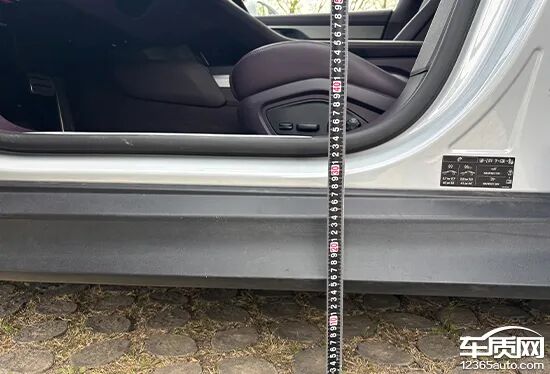
For consumers, the height of the threshold from the ground somewhat determines the convenience of getting in and out of the car. According to the measured results, the threshold height of the test vehicle is 340mm, making it relatively easy for passengers to get in and out.
02 丨Comfort Configuration Test Section
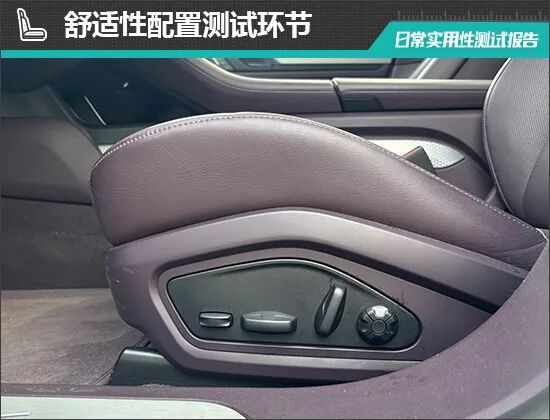
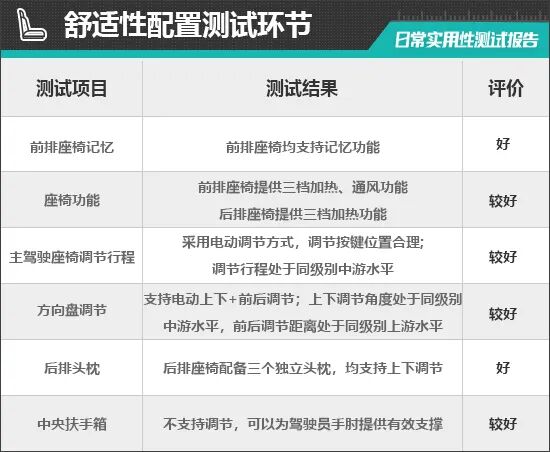
In terms of seating, the driver’s seat adjustment buttons are located on the side of the seat, and the button placement is reasonable. Additionally, the front seats support three levels of heating, and the front seats are equipped with ventilation options, while the rear seats have heating options, demonstrating good comfort configuration.
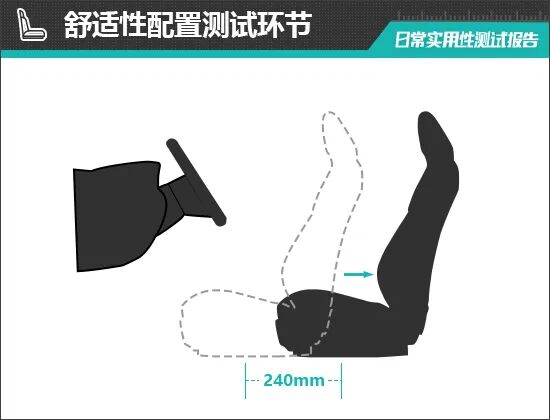
In the test of the driver’s seat, the distance between the front and rear ends of the driver’s seat is 240mm, which is average for its class.
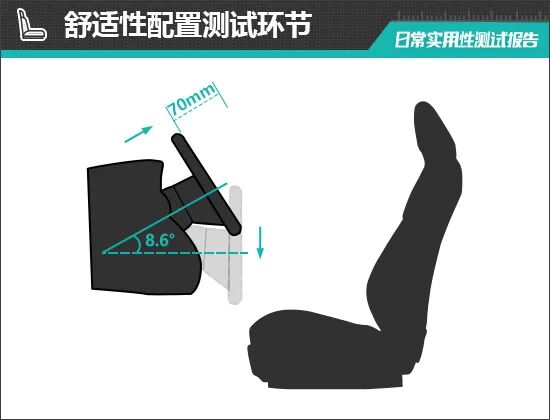
The multifunctional steering wheel supports electric tilt and telescopic adjustments, with an adjustable angle of 8.6°, which is average for its class; the telescopic distance is 70mm, which is above average for its class.
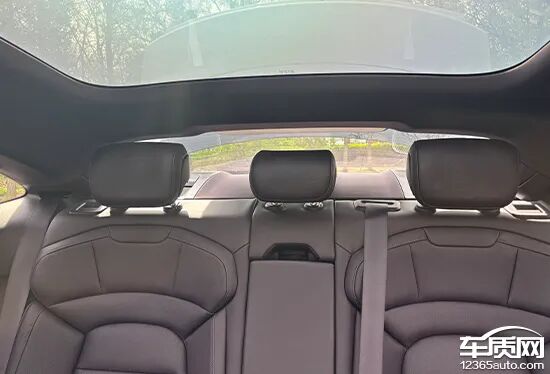
The rear seats are equipped with three headrests, all of which are adjustable in height. The headrest filling is relatively soft, providing a comfortable seating experience.

The front center armrest features a lift-up design. Although it has an asymmetrical structure, it is large in size and covered with soft material, providing good comfort. However, it does not support forward and backward movement or angle adjustment, but the driver can still rest their elbow on it while driving.
03 丨Multimedia Configuration Test Section
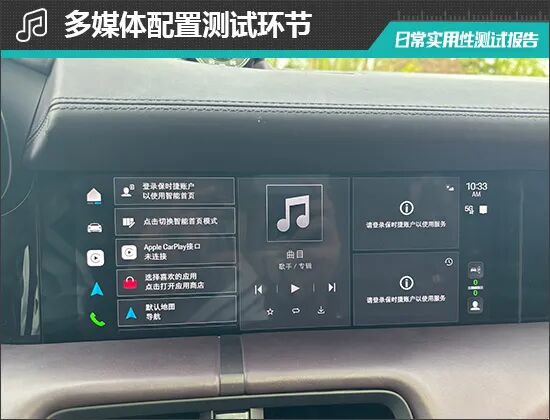
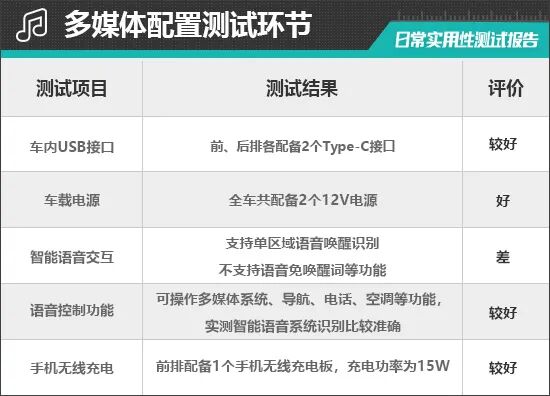


Regarding the USB ports in the car, the test vehicle is equipped with two Type-C ports in both the front and rear rows, but the types of USB ports are somewhat limited. Additionally, the vehicle is equipped with two 12V power sources. We also tested the voltage and current of the USB ports, where the voltage and current of the front Type-C port reached approximately 5.06V and 2.06A, respectively; the voltage and current of the rear Type-C port reached approximately 8.74V and 2.87A, respectively.
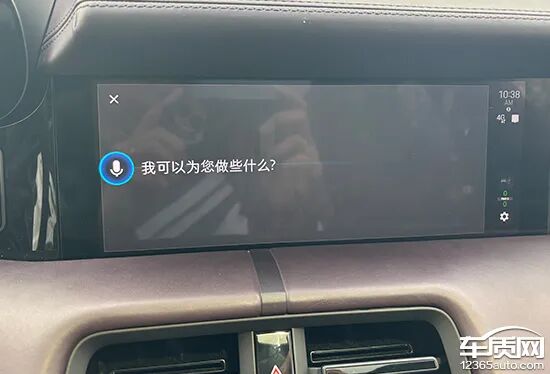
With the increasing prevalence of smart car systems, more and more models are equipped with smart voice assistants. For the “smart voice system,” we evaluated the voice interaction system based on the following four fixed phrases to assess its performance in terms of voice recognition rate, response speed, and controllable functions.
1. I’m a bit cold/I’m a bit hot
2. Open the window/Open the driver’s window/Open the sunroof
3. I want to listen to “XXXX” (song name)
4. I want to go to Jingban Building
After testing, the test vehicle could not recognize the commands “open the window/open the driver’s window/open the sunroof” and “I want to listen to ‘XXXX’ (song name)”; however, the other two commands were recognized and executed, showing relatively accurate voice recognition and quick response speed. Unfortunately, the test vehicle does not support voice wake-up word-free functionality, making its convenience performance average.
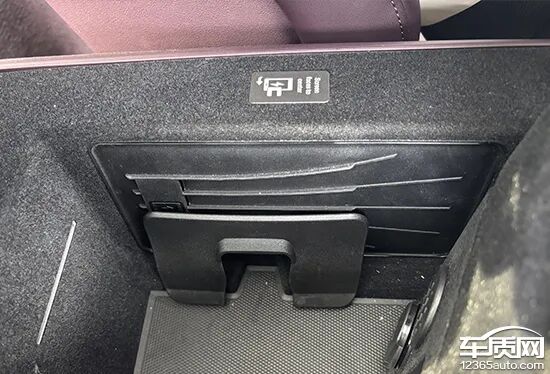
The test vehicle is also equipped with a wireless charging pad in the front center armrest, but its position is too concealed, making it inconvenient for the driver to place and retrieve their phone. Additionally, the wireless charging function can be manually turned off.
04 丨Space Configuration Test Section
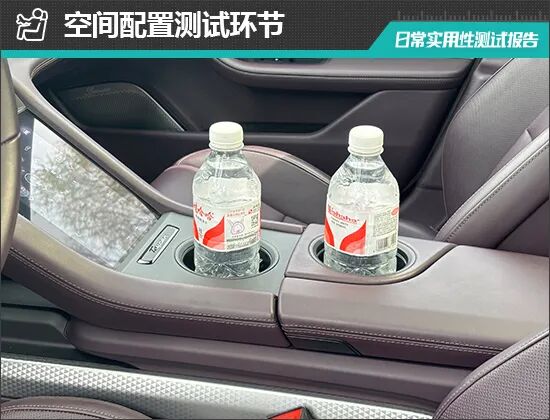
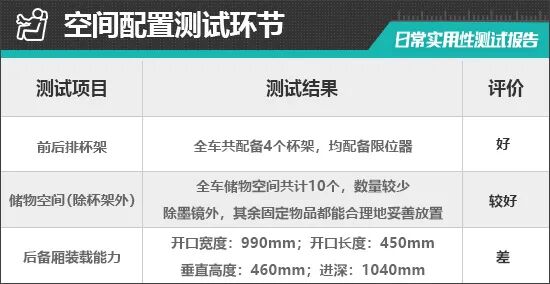
As for the space testing that is closely related to consumers, we have previously experienced the seating space in the test drive article “Feeling the Soul Resonance in ‘Speed’ – Test Drive of the Porsche Taycan”. This time, we will evaluate the storage space and its convenience, which are also frequently encountered in daily life.

For the test of usable space in the car, we only consider the space within reach in the front row, excluding glove compartments, center armrests, etc., that require opening. The testing method involves placing the following fixed items in various storage spaces in the front row to assess the vehicle’s storage space performance based on the placement of these items. The selected fixed items are: 2 regular-sized bottles of mineral water, 1 large-screen phone, 1 lipstick, 1 handbag, 1 pair of sunglasses, 1 folding umbrella, and 1 pack of regular-sized tissues.
After testing, the test vehicle was able to find suitable placements for all items except for a space for sunglasses, indicating that the storage space meets basic usage needs.
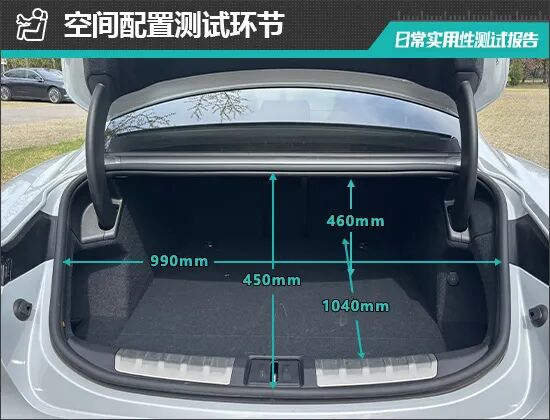
The interior of the trunk is relatively well-shaped, with good floor flatness, and side storage compartments are provided for small items. The rear seats can be folded in a proportion, further expanding the trunk space. However, due to the low and sporty design of the test vehicle, the trunk opening is relatively small, making it somewhat inconvenient to load and unload large items. For the basic measurements of the trunk, we also conducted tests, with the opening length measuring 450mm; opening width measuring 990mm; trunk depth measuring 1040mm; and the vertical height from the trunk floor to the top measuring 460mm.
05 丨Safety Configuration Test Section
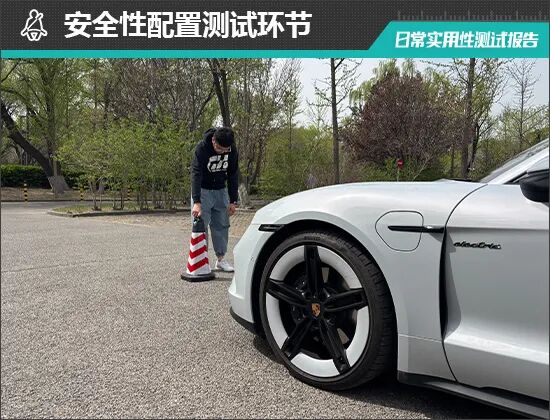
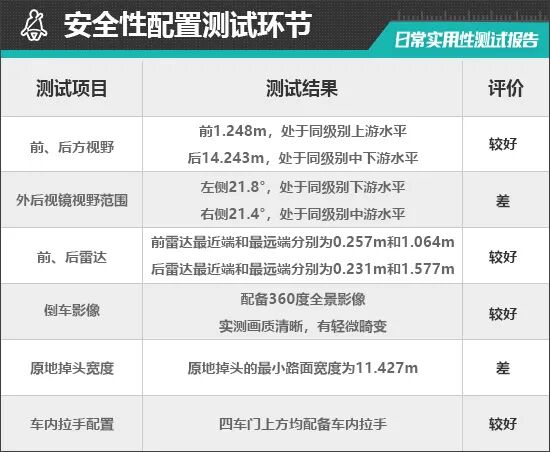
In the vehicle’s front and rear visibility tests, all seats in the car were adjusted to their lowest position, and the measured data may differ somewhat from normal usage by the driver, and are for reference only.


In the front visibility test, we used a 70cm high barrel as a reference object, then adjusted the vehicle distance until the top edge of the barrel was visible from the driver’s seat. After testing, the distance from the barrel to the front of the vehicle was measured at 1.248m, which is above average among tested vehicles in its class.
In the rear visibility test, the barrel was again fixed in place, and the vehicle was moved until the top edge of the barrel was visible. The measured distance for rear visibility was 14.243m, which is below average among tested vehicles in its class.

During the external rearview mirror visibility range test, testers stood 10m vertically from the left and right rearview mirrors and then moved sideways until they appeared at the outermost edge of the mirrors, measuring the lateral distance. By calculating using a formula, the angle of the visibility range of the rearview mirrors can be determined. The larger the angle, the smaller the blind spot range of the rearview mirrors; conversely, the smaller the angle, the larger the blind spot range.
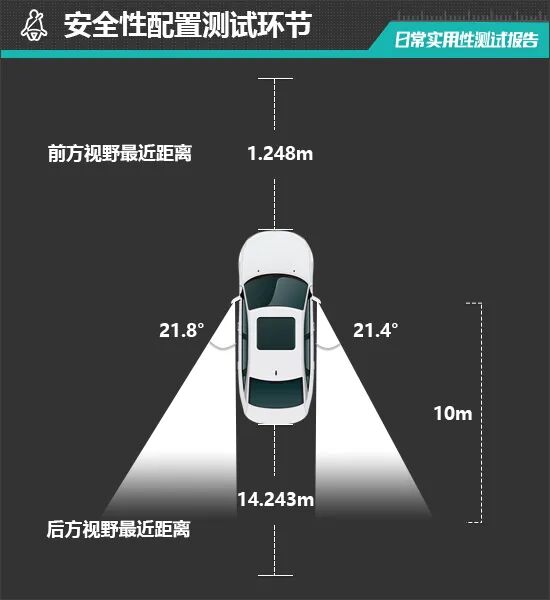
The left and right external rearview mirrors of the test vehicle both use aspheric lenses. The measured visibility range for the left and right external rearview mirrors was 21.8° and 21.4°, respectively. The visibility range of the left external rearview mirror is below average for its class, while the visibility range of the right external rearview mirror is average for its class.
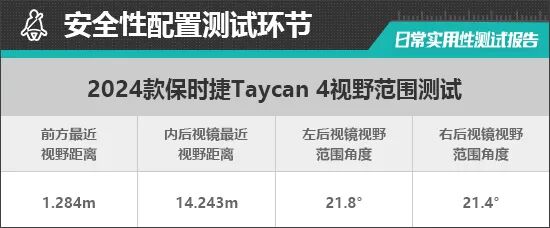
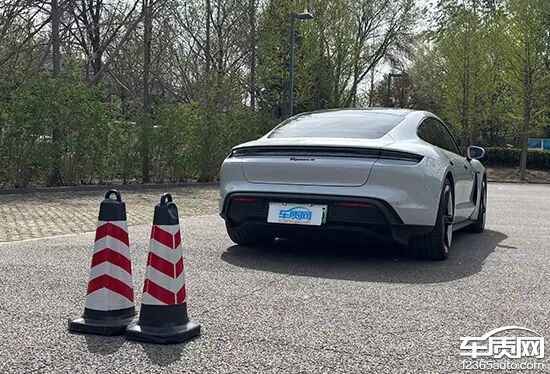
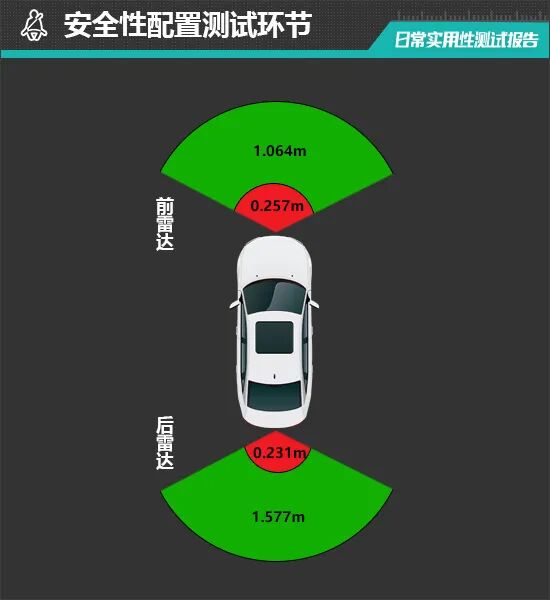
During the testing process, the reversing radar can detect objects behind the vehicle at a distance of 1.577m, showing good radar performance. According to the measured data, the continuous beeping distance for the reversing radar was 0.231m, which is close to the average for its class.
The front parking radar can detect objects in front of the vehicle at a maximum distance of 1.064m, and the radar performance is also excellent; the continuous beeping distance was 0.257m, which is close to the average for its class.
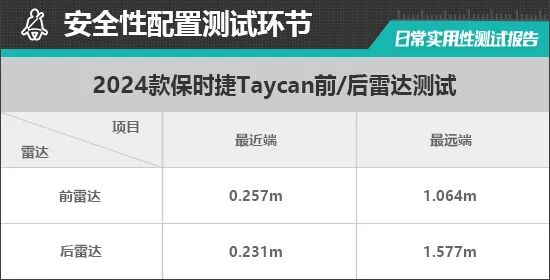
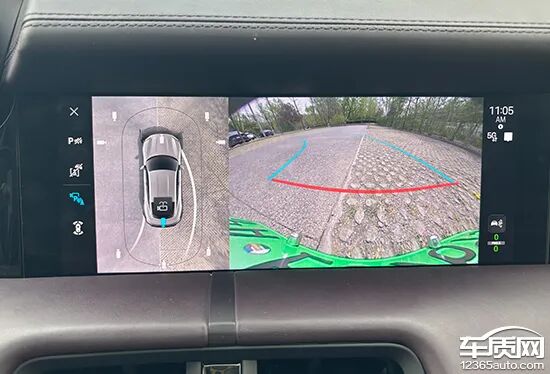
The auxiliary imaging system supports a 360-degree panoramic view and allows the selection of different angles, making it convenient for the driver to view the surroundings of the vehicle. Additionally, the camera imaging quality is high, with excellent clarity, and the images provide parking assist lines that support dynamic steering. Although there is slight distortion in the images, the overall performance is satisfactory.
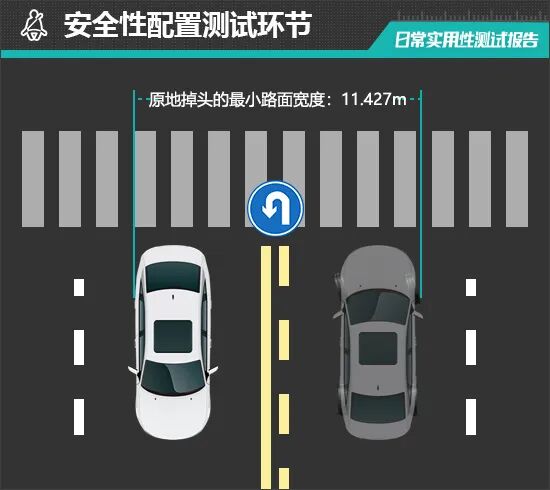
In daily use, vehicles often encounter situations requiring turning or U-turns, making the vehicle’s steering flexibility very important. Understanding the minimum road width required for a U-turn can help avoid scraping and other dangerous situations. After testing, the minimum road width required for the test vehicle to make a U-turn was 11.427m, which is below average for its class.
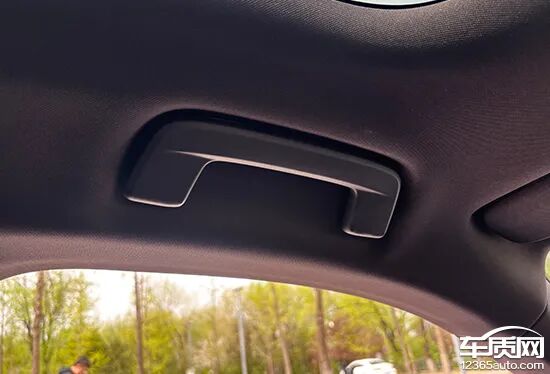
Interior grab handles are essential for individuals with mobility issues and can also assist passengers’ safety on bumpy roads. The test vehicle is equipped with grab handles above all four doors.
06 丨Charging Test

In the actual test, the air conditioning temperature was set to 18°C, and the automatic mode was activated. The driving route included city roads and ring roads, with an average speed of 20±2km/h. Upon reaching the destination, the vehicle’s displayed mileage increased by 10km, while the range decreased by 20km, indicating an average consumption of approximately 2km of range for every 1km driven.
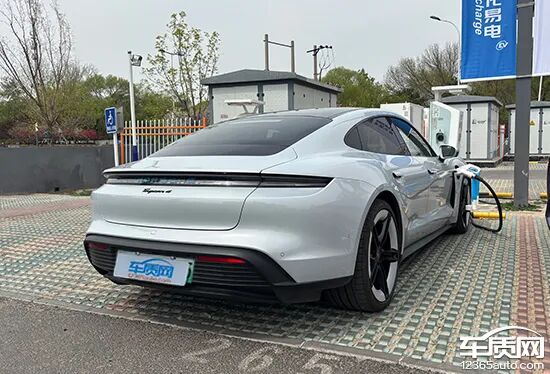

Additionally, we also tested the charging efficiency. After charging for 10 minutes using a fast charging station (peak power), the battery level increased from 79% to 83%, with a range increase of 29km, which closely matched the vehicle’s computer’s estimated time.
Summary 丨
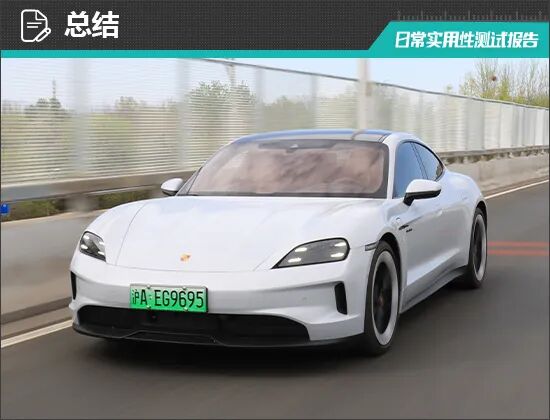
As Porsche’s first pure electric model, the 2024 Taycan performs well in terms of daily practicality, aligning with its product positioning. In terms of comfort configuration, the basic functions meet daily needs, and the rich optional features provide users with customization options. However, its low and sporty coupe design enhances visual appeal but somewhat limits trunk loading capacity and increases the blind spot in rear visibility, making it a case of having to choose between two desirable features. Overall, the practicality of the 2024 Porsche Taycan meets expectations and can satisfy daily driving needs.
RecommendationsRead More



 Click “Read the Original” to learn more about automotive information!
Click “Read the Original” to learn more about automotive information!